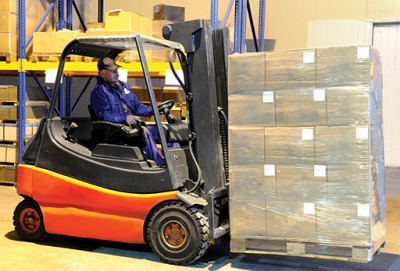By Peter Saunders
While the sign industry has seen automation significantly reduce manual labour in wide- to super-wide format print production environments, there are still many employees working in these spaces who bear a heavy burden each day—often literally, as they must move ever-larger quantities of both printing consumables and final printed output around.
As the Specialty Graphic Imaging Association (SGIA) has pointed out, these situations can raise safety issues. Heavy lifting can lead to serious back injuries and worker compensation claims.
“Nobody likes to think of him or herself as weak and unable to handle a seemingly simple lifting task,” says Marci Kinter, SGIA’s vice-president (VP) of government and business information, “but the truth is our bodies wear down over time and require more rest, conditioning and nourishment. A physical injury early in life can limit you for a day or two, but an injury later in life can effectively end your career altogether.”
Of course, the young are far from immune. According to the American Society of Safety Engineers (ASSE), the most frequent injury resulting in lost work time for employees under 18 years old in the U.S. is overexertion from lifting heavy objects.
Being mindful
One of the risks from unsafe lifting is a hernia, where muscles rupture and part of the body’s internal system protrudes. Surgery is often necessary for this condition.
Other injuries can affect the arms, neck and shoulders. Like back injuries, they are usually caused by improper lifting after inadequate training or while working in cramped conditions.
It is rare for a single incident to cause a back injury. Rather, the repetition of improper motions is usually to blame.
So, to help prevent back injuries, it is important to make sure employees receive proper training to carry out lifting tasks easily and safely within the sign shop, production room or other printing facility.

As they grow, some wide-format printing facilities need forklifts to move pallets of substrates around.
“Be mindful of employees carrying objects long distances,” says Kinter. “Teach them to avoid lifting from floor level or above shoulder height, especially heavy loads. Give new employees, in particular, more information about the range of tasks they are likely to face.”
In some cases, for example, an employee working alone needs to seek out help to lift an object, rather than attempt to lift it on his/her own. It is important for these employees to know there is no shame in asking for assistance. One approach is for employers to specify a maximum weight limit for any single lift.
Factors that contribute to back injuries include the frequency, duration and type of lifting. With this in mind, employees must learn to recognize situations where their back is most at risk. It is also important for them to take time and stretch their muscles before starting any strenuous work. And if they will be doing a lot of heavy or repetitive lifting, they should work at a reduced pace to allow recovery time between stresses.






